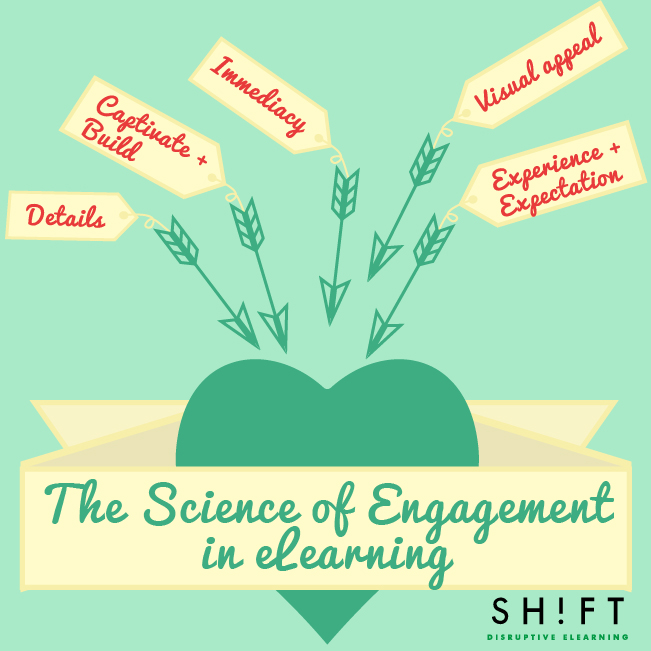As eLearning professionals, we are constantly trying to figure out different ways to engage learners and challenge their understanding. We create attractive images, include games, quizzes, and develop different types of interactive activities in the hopes that most learners become interested in the material, but our job doesn’t stop there.
Engaging learners goes beyond presenting interactive content; it is about designing truly motivating learning experiences. Engagement requires an emotional connection between the content and the learner. And the only way we can do that is by knowing what drives people to spend time, effort, and energy learning your content?
Anthropologist Dr. Grant McCracken, psychologist Dr. Olivier Oullier and neuroscientist Dr. Thomas Ramsøy have uncovered the science of engagement. They have explored into the true nature of engagement - what it means and what causes it. Grounded in science, not fiction. The research reveals the principles and elements of engagement. Here're five you can use to unlock the door to successful eLearning engagement.

1) Experience + Expectation = Engagement
Findings show learning proceeds primarily from prior knowledge. Acknowledge this from the outset of designing a course in order to achieve goals. Instead of focusing only on the information you’d like to deliver, focus on what learners already know. Consider what you would like learners to do with or as a result of having this information. This is the first portion to the above equation.
Clearly define the course objectives (this is like setting a map before learners so they know where they intend to land). This is helping to set up the second portion of the equation in the hopes of achieving learner engagement.
Engagement is shaped by previous experience and their expectation from that. Utilize this in your design.
2) Captivate x Build = Engagement
Capture (captivate) interest by initiating: visuals, an appeal to learners natural curiosity and hooks. Combining novel ways to capture attention with audience resonance builds engagement.
Afterwards, find the story in your content and let it follow a natural flow. Help learners see why this information matters and how it’s relevant to them.
Who cares? Why care? Engagement and comprehension are apprehended when learners emotionally, viscerally, understand why this learning experience is important to them. Give them at least one compelling reason to care about the subject. Make them forge an emotional attachment to it. Will it make them more successful? Perhaps happier? More productive? Answering this maintains interest throughout learning process (“Build” - more in point 4).
The bottom line is if people care, they learn better.
3) Immediacy = Engagement
Our brains have evolved to make snap decisions based on the anticipation of immediate reward. Note that the majority of the time, this is an unconscious process. Often, rewards can be basic things like affirmation and encouragement. Simply defining the reward as being able to work more efficiently (read: easily) will be reward enough.
Clearly illustrate the immediate rewards to obtain the highest engagement. If learners see the real benefit or immediate reward upfront they’ll probably engaged with the course and complete it.
Reward ideas: timed challenges, acknowledged achievement (certificate), affirmation and encouragement.
Answer this for your learners: What will they win? If you can’t answer that for them, your likely to have unengaged learners or drop-outs.
4) Engagement is in the details
The way to successful eLearning is by resonating with learners’ own experiences and evoking emotion. Certain words, situations and contexts will resonate more with your target audience. The more something echoes with their experiences, the more it resonates.
Encourage students through moments of thoughtful reflection in your program. Make them pause for a while and ask them how the content they have just consumed relates to their work. The content has to reach them intellectually and emotionally as well. Asking what matters most to your learners beforehand offers answers to effective engagement.
5) Visual appeal differentiates and initiates engagement
Aesthetics differentiate brands and initiate engagement. Products deemed highly attractive engage both visual and emotional systems of the brain instantly.
If two eLearning courses offer similar functionality, but one of them lacks visual beauty, users would prefer to take the beautiful one. It is much easier to study in attractive environment than in an unattractive one. Average quality images and design in the eyes of common users will make the whole course look average as well, but good, attractive design will make the eLearning course exceptional.
For more information about how the Science of Engagement can help you create better eLearning courses read this report.




